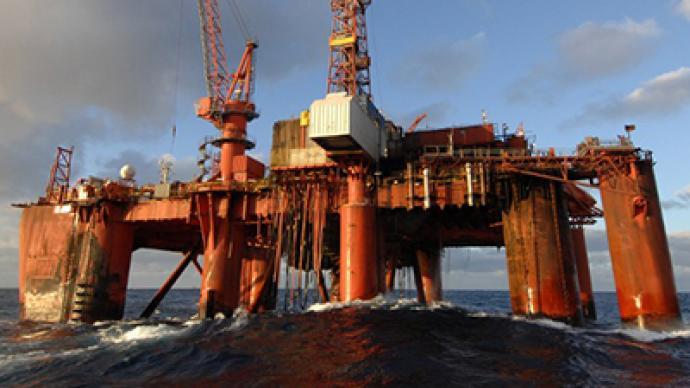
ROSNEFT: NORTH EXPANSION

Norway's Ministry of Petroleum and Energy confirmed its determination to stimulate additional activity, both in the mature and frontier areas on the NCS. Oslo is well intentioned to keep old investors and draw new companies, while strengthening its ties with Russia's Rosneft.
These are the main messages of the first two days of the Offshore Northern Seas (ONS) Annual Conference and Exhibition that is taking place in Stavanger.
"My government is committed to keeping stability and predictability a trademark of Norwegian oil and gas policy. We will continue to pursue a broad political consensus that will benefit both country and industry. The same broad alliance that supported the 2011 white paper on the oil and gas policy," Energy Minister Tord Lien said in a note released on Tuesday.
The intention is clear. Norway is willing to attract new investments to offset declining production.
"The exploration activity has been stable and successful over the past decade. Many discoveries have been made. The potential is great for creative, engaged and hungry companies to develop these resources efficiently and timely."
The Minister added that, after 40 years of production, 56% of expected recoverable resources are still in the ground.
RISING COSTS AND DECREASING PRODUCTION
Rising costs and the depletion of traditional fields pose a threat for the Norwegian oil and gas sector. In this context, partnerships remain crucial and conferences retain a key role for companies and other stakeholders.
That is why the ONS conference in Stavanger, which started on Monday and will finish on Thursday, remains at the centre of attention.
In this setting, Lien also spoke about the partnership with Rosneft.
ROSNEFT IN NORWAY
Norway wants to strengthen its ties with the company led by Igor Sechin. Despite the sanctions and restrictions on the Russian company, including a ban on technology transfer for deepwater production, Minister Lien does not see any problem for cooperation opportunities between Statoil and Rosneft on the NCS.
"The restrictive measures are directed toward export of goods for use in Russia, and will not be relevant for foreign companies' participation in petroleum activities or licensing rounds" offshore Norway, Oil and Energy Minister Tord Lien told Bloomberg on Monday.
In this context, Rosneft's interest in Norway's next licensing round and its cooperation with Statoil in the Arctic Barents Sea hint at a central role of the Russian company in the area in the near future.
Earlier this month, the two companies did indeed start operations at the Pingvin License PL713 prospect in the Norwegian section of the Barents Sea. Rosneft holds a 20% participating interest in 4 fields within the licence PL713 through its 100% indirect subsidiary Energy RN Nordic Oil AS.
WHY NEW PROJECTS?
A recent report by IHS suggested that tax increases and proposals on power 'introduced without observing normal consultation processes are among examples of decisions which enhance uncertainty for companies interested in investing on the NCS.'
Oil companies predict a 21% plunge in investments for 2015.
That is why new projects, like Aasta Hansteen and Johan Sverdrup, are particularly relevant to counter a slowdown in investments and output.
STATOIL'S AASTA HANSTEEN
During the first hours of the conference in Stavanger, Statoil turned the spotlight on its Aasta Hansteen project.
"Aasta Hansteen is one of the biggest and most complex industrial projects in Europe. With the Polarled pipeline we are taking the Norwegian gas infrastructure northward across the Arctic Circle for the first time," Statoil's Torolf Christensen commented in a separate statement.
According to the company, the investments in the Aasta Hansteen and the Polarled pipeline total NOK 57 billion. The field is operated by Statoil, which holds 75% working interest. OMV and ConocoPhillips are the other two partners, with 15% and 10% working interest, respectively.
The 480-kilometre Polarledl gas pipeline will connect the deep water project to Nyhama in Møre og Romsdal county.
AKER SOLUTIONS' PLANS
Similarly, Aker Solutions presented its plans, underlining the importance of the North Sea Johan Sverdrup oil deposit.
The oil and gas services company headquartered in Oslo spoke about the largest offshore oil find in Norway in 30 years, which is estimated to hold 1.8 billion to 2.9 billion barrels of oil equivalents.
"Johan Sverdrup represents the future of the Norwegian oil industry and we are working closely with Statoil, the operator, to ensure the best possible solution," Valborg Lundegaard, Aker Solutions' head of engineering, commented.
In this context, technology and cost levels will remain central for any development. Aker Solutions is examining ways to cut the cost level of its Engineering division by 30% by 2017.
"We began this program about a year ago. It's a demanding target, but we see from ongoing projects ... that the improvement processes we've launched are working," Engineering Vice President Valborg Lundegaard told Reuters on the sidelines of the ONS conference.
TECHNOLOGY
Currently, there is a strong focus on technology and Stavanger is the perfect stage to present new products.
On Monday, Schlumberger launched its Quanta Geo photorealistic reservoir geology service at the Offshore Northern Seas Annual Conference and Exhibition.
'The new service includes the industry's first microresistivity imager that produces oriented, photorealistic, core-like images of the formation in wells drilled with oil-base mud (OBM). Interpretation of the images identifies geological features and predicts reservoir trends in 3D with a high degree of certainty,' the company wrote on its website.
Technology will take centre stage also in the coming days of the conference. As the recent deal between Statoil and Kvaerner suggests, efficiency and cost reduction are the main options to cope with the 3 billion kroner ($520 million) a year tax increase introduced by the previous government.
naturalgaseurope.com





